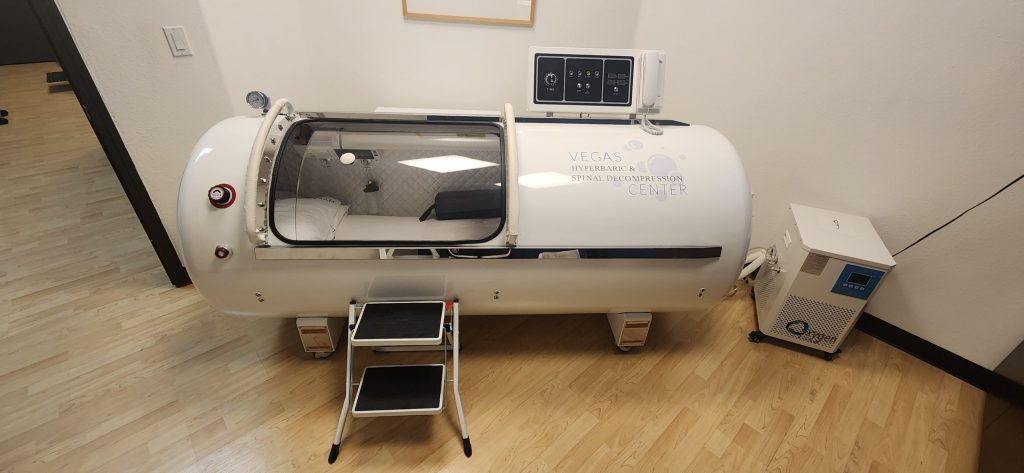
Hyperbaric oxygen therapy can enhance athletic performance, accelerate recovery, and aid in the healing of injuries for athletes in several ways. Here, we delve into these techniques to help people perform better athletically and recover more quickly.
Hyperbaric oxygen therapy (HBOT) is already being used to treat wounds and conditions such as carbon monoxide poisoning and decompression sickness. In recent years, however, it has gained popularity among athletes as a potent bio hack for enhancing athletic performance, recovery, and overall health. Here are eight evidence-based ways HBOT can help athletes at the peak of their game.
Speeds Up Muscle Recovery
Strenuous workouts and competition cause muscle fibers to break down, which results in inflammation and pain. HBOT raises the amount of oxygen in tissues by having patients inhale 100% oxygen at higher-than-atmospheric pressures.
Accelerated blood circulation reduces protein buildup and lactic acid concentration. Athletes who have received HBOT after eccentric exercise-induced muscle damage have reported a decrease in muscle soreness and facilitated recovery in some trials.
Reduces Inflammation
Inflammation is a natural part of the body’s response to intense training or injury, but chronic or excessive inflammation can impede recovery and lead to long-term damage. HBOT can attenuate inflammation by decreasing pro-inflammatory cytokines and up-regulating anti-inflammatory molecules, including interleukin-10 (IL-10).
In research, there is evidence that HBOT can decrease inflammatory markers and accelerate healing in soft tissue injuries. Athletes will recover more effectively between training sessions by controlling inflammation.
Enhances Mitochondrial Function
Mitochondria are the powerhouses of the cell, driving the process of energy production. HBOT is proposed to increase levels of mitochondrial biogenesis (the growth of new mitochondria), thereby improving cellular energy production.
Finally, repeated HBOT treatments led to mitochondrial-related gene expression and enhanced cellular energetics, as shown in the Literature (vide infra), which is vital for endurance and strength-trained athletes [92].
Improves VO2 Max and Cardiovascular Fitness
VO2 max (also maximal oxygen consumption, maximal oxygen uptake, or aerobic capacity) is the maximum rate of oxygen consumption measured during incremental exercise; that is, exercise of increasing intensity.
HBOT may help boost VO2 max by increasing the availability of oxygen to working muscles during recovery, thereby indirectly enhancing athletic performance.
While HBOT doesn’t itself exercise the heart or lungs, it creates an environment rich in oxygen that promotes the regeneration of red blood cells and blood vessels. This aspect of HBOT has the long-term effect of enhancing cardiovascular efficiency, especially when combined with aerobic conditioning.
Accelerates Healing from Injuries
Sprains, strains, fractures, and tendonitis are among the most common sports-related injuries. HBOT promotes wound healing and tissue repair by stimulating fibroblast activity, collagen production, and angiogenesis (new blood vessel formation).
Studies have demonstrated that HBOT dramatically shortened the period required for healing of sports injuries to soft tissues, permitting athletes a quicker return to activity.
Facilitates Concussion and Brain Injury Recovery
The risk of head injury is of significant interest in contact sports. And new research is validating the use of HBOT for mild traumatic brain injury and post-concussion syndrome. HBOT plays a role in reducing cerebral inflammation, improving cerebral blood flow, and promoting neuroplasticity.
Many studies and case reports have been published demonstrating that athletes experience cognitive and physical improvement after HBOT for concussions. One report found that HBOT led to enhanced memory, fewer headaches, and improved sleep in post-concussion patients.
Boosts Immune Function
Another way to explain it: Heavy training loads can temporarily suppress the immune system, making athletes more susceptible to illness. HBOT enhances the immune response through increasing white blood cell activity, antimicrobial killing, and antioxidant mechanisms.
A stronger immune system also leads to fewer missed training days due to illness, which is especially important when it comes to achieving peak performance or competing.
Mental Clarity and Focus
In many sports, brain function is equally important as physical prowess. HBOT enhances blood oxygen levels in the brain, which can help athletes think more clearly, react more quickly, and stay focused under pressure. Sharper mental acuity could be an edge in high-pressure situations.
There have been studies showing a benefit in attention, processing speed, and executive function following HBOT in patients with chronic brain injuries, which would improve athletic performance due to more accurate on-field decision-making.
Final Thoughts
There are numerous benefits to HBOT that athletes can utilize for enhanced training and recovery.
It may accelerate muscle repair or optimize cognitive function; HBOT is a safe and non-invasive, evidence-based approach that is steadily gaining popularity within the field of sports medicine.
It’s not a substitute for proper training and nutrition, along with periodized recovery techniques, but HBOT can provide a passport to accelerated recovery for athletes dealing with injury, inflammation, or simply wear and tear from being subjected to the extreme physical demands of weightlifting or endurance sports.